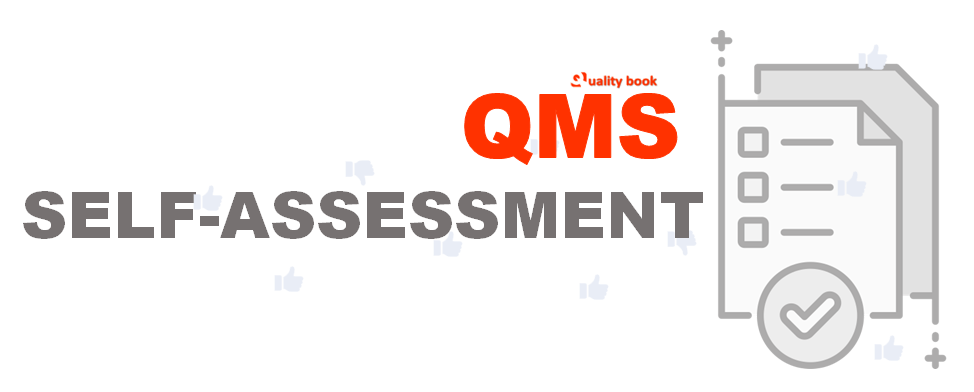Conducting a regular QMS self-assessment is, in my opinion, one of the most important tools for its continuous improvement!

Therefore, in our company it is this process that is given increased attention not only to the Quality Service, but also to the management and the personnel management department.
It is best to show the methodology of self-assessment as the example of a real methodology, which is implemented, for example, in our company. At the end of each year, we conduct a staff survey to assess the effectiveness of the QMS in accordance with the requirements of ISO 9001.
The structure of the survey consists of three blocks:
- Strategy and organization of business processes,
- Internal environment and communications,
- Staff engagement and satisfaction.
Each block consists of 20-25 questions (the content of the questions is “Know How” and is not published here).
Surveys
The surveys themselves and their current results may be published on the company’s internal server and are available to all personnel, which gives confidence in their objectivity.
The results of the analysis by blocks and the final analysis of the survey can be carried out jointly with the Department of Personnel Management and are published on the intranet in the form of the results of the SWOT analysis.
Our methodology for processing personnel survey data is used.
SOWT Analysis
The SWOT analysis is as follows.
The Opportunities and Strengths fields include only the percentage of unconditionally positive responses (in parentheses with a plus sign), and the Dangers and Weaknesses fields include only the percentage of unconditionally negative responses (in parentheses with a minus sign).
Next, the degree of stability of the QMS in the selected direction “Strategy and organization of business processes” is calculated in the following way.
The maximum mobilization (reserve) of the internal potential of the company in the realization of its potential in this direction is 623 conventional units (ZPK = + 623).
The maximum consumption of the internal potential in the realization of potential hazards is only 114 conventional units (PKK = -114).
The coefficient of stability of our company in the direction of “Strategy and organization of business processes” is:
K = (ZPK – RPK) \ RPK = 509\114= 4, 46
This greatly exceeds the value of the company’s system stability range: Ko=2 – 3!
The results of stability calculations for all three blocks are collected in Table. 1
Table. 1 (figures taken from the ceiling for example)
| №№ | Direction of analysis of the results | Degree of stability |
| 1 | Strategy and organization of business processes | 4,46 |
| 2 | Internal environment and communications | 2,50 |
| 3 | Staff engagement and satisfaction | 7,70 |
Analyzing sustainability : QMS self-assessment
For the presented example, the maximum mobilization (stock) of the internal final potential of the company. When realizing its potential is 355 conventional units (ZPK = + 355).
The maximum consumption of the internal potential in the realization of potential hazards is only 67 conventional units (PKK = -67).
The stability coefficient of the company’s QMS for this example is:
K = (ZPK – RPK) \ RPK = 288\67= 4, 2
Further, all the answers to all the questions of the blocks (approximately 70 questions) are distributing. According to the areas of analysis of interest to us by means of an average summary of the answer data – see Table. 2
Table. 2 (figures taken from the ceiling for example)
| №№ | Direction of analysis | Yes | Partly | No |
| 1 | Staff understanding of the company’s strategy | 60% | 30% | 10% |
| 2 | Efficiency of QMS implementation in the company | 50% | 36% | 14% |
| 3 | Maintaining sustainability in the development of the company | 56% | 36% | 8% |
| 4 | Indoor environment quality | 58% | 35% | 7% |
| 5 | Efficiency of internal communications | 36% | 46% | 18% |
| 6 | Employee Engagement | 57% | 37% | 6% |
| 7 | Staff satisfaction | 74% | 22% | 4% |
This method is developing by us not by chance. Such a mixing of questions allows you to get a more plausible picture of the situation.
Base on the results of the survey, problem areas have been identify. That need to be pay attention to when improving the QMS.
The degree of problematic in our methodology. For example, is defined as the ratio of negative and positive responses. And the criterion for the presence of the problem “P” is conditionally taken to be the ratio: P > = 0.5
For example, in Table 8, the area of internal communications should be considered problematic.
As the QMS improves, the value of the problem criterion should decrease!
For example, next year we plan to establish it at the level of:
P > = 0.4.
The final results of the QMS self-assessment is publish in the form of a structural diagram. Corrective actions are mandatory to develop for all problem areas.